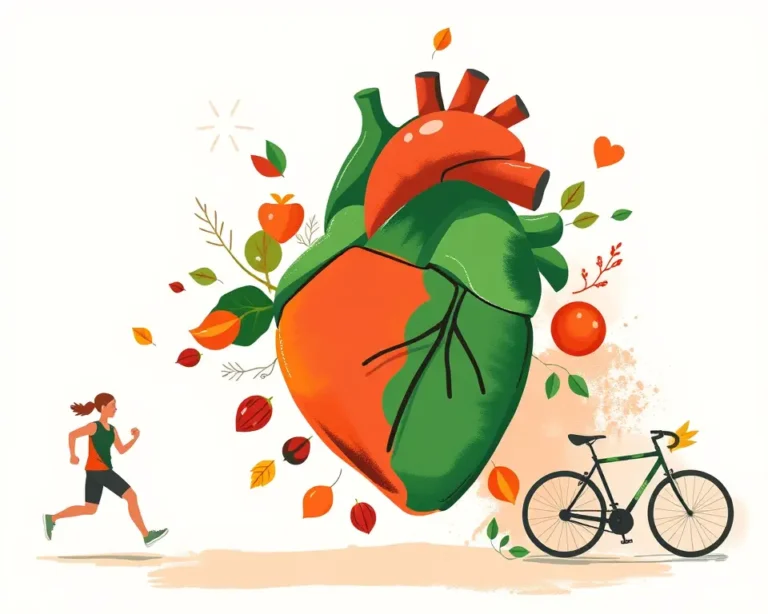Cardiovascular diseases (CVDs) remain a leading cause of death worldwide, but research increasingly highlights the power of lifestyle interventions in mitigating this risk. A growing body of evidence emphasizes that combining regular exercise with a healthy eating pattern provides the best protection against CVD. This article delves into the synergistic effects of exercise and diet, exploring how they work together to safeguard your heart health and overall well-being.
The Power of Lifestyle Choices
According to the Centers for Disease Control and Prevention, heart disease is the leading cause of death in the United States, with one person dying every 33 seconds from cardiovascular disease. However, a significant portion of CVD is preventable through conscious lifestyle choices. Experts emphasize that modifications to diet and exercise, even small ones, can drastically improve general health and, specifically, cardiovascular health.
Exercise: A Cornerstone of Heart Health
Regular exercise offers a multitude of benefits for your heart, including:
- Lowering blood pressure: Exercise helps to reduce both systolic and diastolic blood pressure, easing the strain on your heart.
- Improving cholesterol levels: Regular physical activity can lower harmful LDL cholesterol while increasing beneficial HDL cholesterol.
- Maintaining a healthy weight: Exercise helps burn calories and reduce body fat, a major risk factor for heart disease.
- Controlling blood sugar: Physical activity improves insulin sensitivity and helps regulate blood sugar levels, reducing the risk of type 2 diabetes, a condition closely linked to heart disease.
- Reducing inflammation: Exercise can help lower inflammation throughout the body, a key factor in the development of CVD.
- Strengthening the heart muscle: Aerobic exercises, such as walking, running, swimming, or cycling, strengthen the heart muscle, allowing it to pump blood more efficiently.
- Improving blood circulation: Exercise increases heart rate and improves blood circulation, ensuring that your heart and other organs receive the oxygen and nutrients they need.
- Reducing stress: Exercise helps to reduce stress hormones that can put an extra burden on the heart.
Types of Exercise for Heart Health
The American Heart Association and the American College of Sports Medicine recommend combining aerobic exercise with resistance training for optimal heart health.
- Aerobic exercise: Aim for at least 150 minutes of moderate-intensity aerobic exercise or 75 minutes of vigorous-intensity aerobic exercise per week. Examples include brisk walking, jogging, swimming, and cycling.
- Resistance training: Incorporate strength training exercises, such as weight lifting or bodyweight exercises, at least twice a week.
- Flexibility and balance exercises: Activities like yoga and stretching improve flexibility and balance, reducing the risk of injuries and supporting overall fitness.
Healthy Eating: Fueling a Strong Heart
A heart-healthy diet is just as crucial as exercise in preventing CVD. Key components of a heart-healthy eating pattern include:
- Fruits and vegetables: Emphasize a wide variety of colorful fruits and vegetables, rich in vitamins, minerals, and antioxidants.
- Whole grains: Choose whole grains and products made up mostly of whole grains over refined grains.
- Healthy protein sources: Opt for lean protein sources, such as legumes, nuts, fish, seafood, and low-fat or fat-free dairy. If you eat meat and poultry, ensure they are lean and unprocessed.
- Healthy fats: Use liquid non-tropical vegetable oils such as canola, corn, olive, soybean, and sunflower oils. Include sources of heart-healthy fats like avocados, walnuts, olive oil, dark chocolate, eggs, salmon, and tuna.
- Minimally processed foods: Limit your intake of processed foods, which are often high in sodium, added sugars, and unhealthy fats.
- Limit unhealthy fats: Avoid unhealthy trans and saturated fats like bacon, whole milk, fried and highly processed foods.
- Minimize added sugars: Reduce your consumption of added sugars, found in many processed foods and sugary drinks.
- Reduce sodium: Prepare foods with little or no salt and limit your intake of high-sodium foods.
- Limit alcohol intake: If you drink alcohol, do so in moderation.
Popular Heart-Healthy Diets
Several dietary patterns have been shown to be particularly beneficial for heart health, including the Mediterranean diet and the DASH (Dietary Approaches to Stop Hypertension) diet.
- Mediterranean diet: This diet emphasizes whole grains, legumes, nuts, lean meats, fruits, and vegetables, and limits processed foods, refined carbohydrates, red meat, and alcohol.
- DASH diet: The DASH eating plan emphasizes a diet with high intake of fruits and vegetables, low-fat dairy products, whole grains, poultry, fish, and nuts, and low intake of total and saturated fat and cholesterol.
The Synergistic Effect: Exercise and Diet Working Together
While both exercise and healthy eating offer individual benefits for heart health, their combined effect is even more powerful.
- Reduced visceral fat: Both physical activity and flexible eating behavior can help reduce visceral fat, the dangerous fat that accumulates around the abdominal organs. The effect is likely to be more effective when the two are combined.
- Improved metabolic health: A healthy diet is associated with better metabolic health, which could be one possible way that it leads to improved fitness and ability to exercise.
- Enhanced weight management: Exercise helps burn calories, build muscle, and increase metabolism, while a healthy diet provides the nutrients your body needs to function optimally. Together, they can help you achieve and maintain a healthy weight, reducing the strain on your heart.
- Reduced risk of metabolic syndrome: Regular exercise and a healthy diet can help prevent metabolic syndrome, a cluster of conditions that increase the risk of heart disease, stroke, and type 2 diabetes.
Practical Tips for Combining Exercise and Healthy Eating
- Set realistic goals: Start with small, achievable goals for both exercise and diet.
- Make gradual changes: Don’t try to overhaul your entire lifestyle overnight. Instead, focus on making gradual, sustainable changes.
- Find activities you enjoy: Choose physical activities that you find enjoyable, so you’re more likely to stick with them.
- Plan your meals: Plan your meals in advance to ensure you’re eating a balanced, heart-healthy diet.
- Track your progress: Keep track of your progress to stay motivated and identify areas where you need to make adjustments.
- Stay consistent: Consistency is key to reaping the long-term benefits of exercise and healthy eating.
- Seek support: Enlist the support of friends, family, or a healthcare professional to help you stay on track.
The Importance of Consistency
Consistency is key to reaping the long-term benefits of exercise and healthy eating. Studies show that people who exercise regularly are less likely to suffer a sudden heart attack or other life-threatening cardiac event. Also, lifestyle modifications from exercise and dietary interventions have been well studied and proven effective toward CVD prevention and management.
Beyond Exercise and Diet: Additional Lifestyle Factors
In addition to exercise and diet, other lifestyle factors play a significant role in heart health:
- Quitting smoking: Tobacco use is harmful to your health in multiple ways, including increasing heart rate and blood pressure. Quitting smoking has immediate and long-term benefits for cardiovascular health.
- Managing stress: Chronic stress can elevate blood pressure and contribute to unhealthy lifestyle choices. Managing your stress with activities such as exercise and relaxation techniques can help reduce the risk of heart disease and promote overall well-being.
- Getting adequate sleep: Aim for 7-8 hours of quality sleep per night to support heart health.
- Regular check-ups: Yearly physical exams with a primary care physician can help in the early detection of and intervention in potential cardiovascular issues.
A Proactive Approach to Heart Health
Taking a proactive approach to heart health by combining regular exercise with a healthy eating pattern is one of the best investments you can make in your long-term well-being. By adopting these heart-smart habits, you can significantly reduce your risk of cardiovascular disease and enjoy a healthier, more vibrant life.
Remember, it’s never too late to start making positive changes. Even small modifications to your lifestyle can have a substantial impact on your heart health. Embrace the power of exercise and healthy eating, and take control of your cardiovascular destiny.







